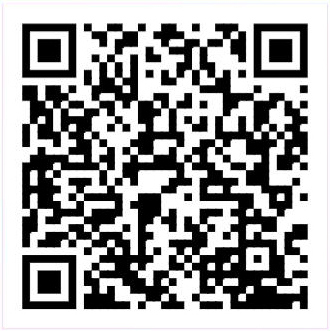Image
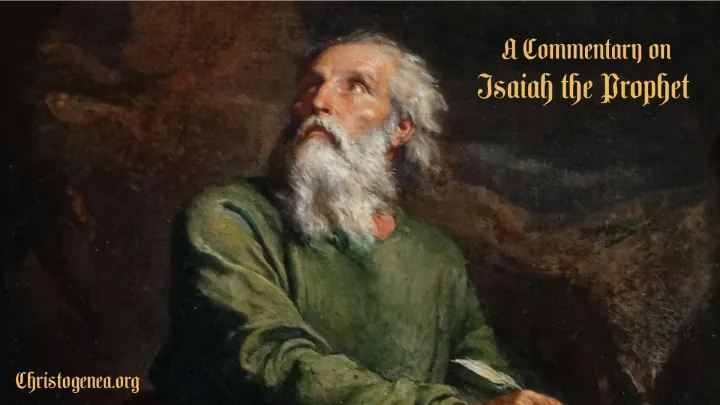
Christogenea is 100% reader supported. If you find value in our work, please contribute and help to keep it going! See our Contact Page for more information!

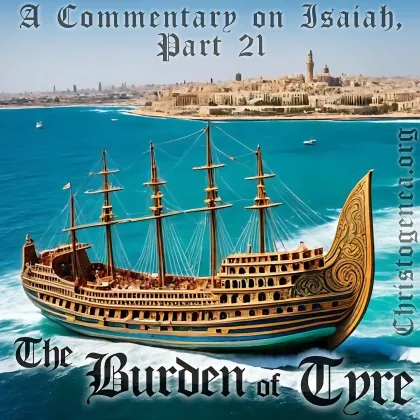
A Commentary on Isaiah, Part 21: The Burden of Tyre
Since Isaiah chapter 13 and the burden of Babylon, the prophet has announced an entire series of burdens against what may be considered to have been the world of ancient Israel at this time in history, with the death of Ahaz and the first few years after Hezekiah had become king of Judah. In the course of these burdens, there is no mercy for Babylon, nor for the king of Babylon. But there is mercy for the Israel in the burdens of Moab and Damascus. There was also mercy for the Israelites of the “land shadowing with wings”, which are evidently those of the Assyrian deportations who were portrayed as making a future supplication to God. Then there were expressions of hope and mercy for the people of Judah who would flee into Egypt, although they would suffer for having done so, and plausibly also for those who would flee into Arabia. However in the course of those burdens, there was no hope or mercy extended to the Egyptians, Ethiopians, Edomites or Arabians. Then finally, in the Valley of Vision, which was an oracle against Jerusalem, there were continued expressions of hope for the people of Judah in the face of an ominous condemnation, even if that hope is expressed enigmatically in the promise of the Key of David. Now we come to the final burden of the series, and it is the burden of Tyre, and even though Tyre itself is condemned, as Jerusalem had been, there are still messages of hope and mercy for at least a portion of its people, as we shall see here in our discussion of Isaiah chapter 23.
So now, discussing the Burden of Tyre, we must first make an insistence, that the Phoenicians of the Judges and Kingdom periods of ancient Israel certainly had been Israelites, at least for the most part, in spite of the general insistence of modern Jewry that they had been Canaanites. So on most Bible maps which are published today, a land labeled as Phoenicia is demarcated in a manner where it appears to have been separate from the land of the tribes of Israel. But that is not true, and every Bible map which has done so has perpetuated a lie which is contrary to the actual text of Scripture. The evidence of this is seen as early as Judges chapter 5, where in the Song of Deborah the prophetess had lamented that “17 Gilead abode beyond Jordan: and why did Dan remain in ships? Asher continued on the sea shore, and abode in his breaches.”
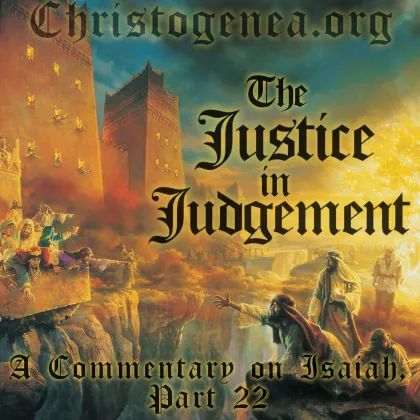
A Commentary on Isaiah, Part 22: The Justice in Judgment
With our last presentation here, The Burden of Tyre, concluding Isaiah chapter 23 the prophet seems to have finally come to the end of his long list of burdens concerning certain of the people of the ancient world of Israel. So, as we hope to have explained, the burdens of Babylon, Moab, Damascus, Egypt, the Desert of the Sea, Dumah – which much more likely should have been Edom, the burden of Arabia and the burden of Jerusalem in the Valley of Vision, and finally, the burden of Tyre, had all actually been directed at Israelites who had been in the process of being taken into captivity, or in the process of trying to avoid captivity. So even where statements are made concerning Babylonians, Egyptians or Arabians, they were made for the sake of the children of Israel, and not for the sake of those others. The entire Bible was written for the sake of the children of Israel, and the others are of no consequence unless Yahweh uses them to punish Israel. So each of the burdens were ominous warnings for Israel, but Israel was also granted some degree of hope or mercy throughout.
As we closed Isaiah chapter 23, concerning the Tyrians the promise of mercy was quite subtle, where, speaking of the merchandise of ancient Tyre, the Word of Yahweh declared that it would be “for them that dwell before the LORD, to eat sufficiently, and for durable clothing.” This message of hope for the Israelites of Tyre, those of the Tyrians who dwell before Yahweh, evokes the words of Christ in Luke chapter 12 where He told His disciples, in part: “27 Consider the lilies how they grow: they toil not, they spin not; and yet I say unto you, that Solomon in all his glory was not arrayed like one of these. 28 If then God so clothe the grass, which is to day in the field, and to morrow is cast into the oven; how much more will he clothe you, O ye of little faith? 29 And seek not ye what ye shall eat, or what ye shall drink, neither be ye of doubtful mind.” Having food and raiment is enough of a blessing, and it is also probably better than one may expect in a time of judgment. The word for durable is עתיק or athiq (# 6266) and Strong’s defined it as “probably antique, i.e. venerable or splendid” so it is evident that Yahweh would even clothe them well. Likewise, He would also feed them well, as the word for sufficiently is שׂבעה or sobah (# 7654) which is defined as satiety, so that they would be satisfied with their victuals.
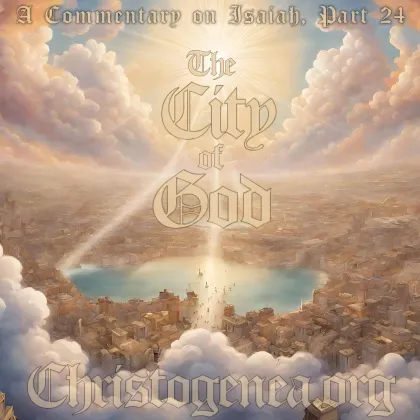
A Commentary on Isaiah, Part 24: The City of God
Describing the words of the prophet in the opening verses of Isaiah chapter 25 as we had discussed them in our last presentation, The Wonder of Seeing, the prophet had explained that when the people saw the destruction of the city, which continues to be a reference to the burden of Tyre that had begun in Isaiah chapter 23, that they would know that God is true, speaking in reference to those who had His Word in the first place. Therefore upon seeing the prophesied judgment, they should exalt God and praise His Name. This evokes the words of the 64th Psalm, attributed to David, where he wrote of men who witness the judgment of God and said: “9 And all men shall fear, and shall declare the work of God; for they shall wisely consider of his doing. 10 The righteous shall be glad in the LORD, and shall trust in him; and all the upright in heart shall glory.” So the righteous should be glad when they see, or even understand, the judgment of Yahweh whenever it is executed in the earth. Here in Isaiah chapter 26, the then-future destruction of Tyre remains in view, from Isaiah’s perspective, and now it shall be set in contrast to Jerusalem. However the Jerusalem portrayed here is not necessarily the Jerusalem of Isaiah’s time.
The destruction of ancient Jerusalem had already been prophesied in earlier chapters of Isaiah, and especially in chapters 3 through 5 and chapter 10, but as recently as chapter 22 and the burden of The Valley of Vision. While Yahweh had explicitly protected Jerusalem from the siege of the Assyrians in the time of Hezekiah, which we shall also see here in later chapters of Isaiah, there are also further prophecies of its ultimate destruction. However before that destruction was fulfilled, there were even later promises that Jerusalem would be rebuilt, and that it would remain at least until the coming of the Messiah, which is evident in Daniel chapter 9, whereas here it was stated that Tyre would not be rebuilt. As we have asserted, while there may have been structures at the site of ancient Tyre in later times, it was certainly not the same as the ancient city, simply because the land was occupied once again.
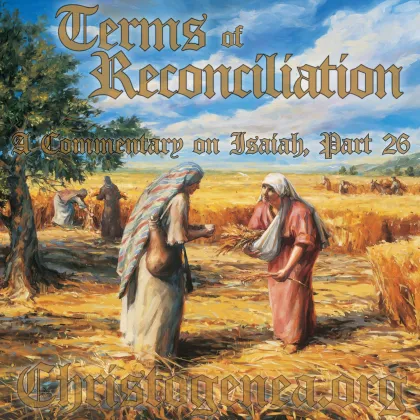
A Commentary on Isaiah, Part 26: Terms of Reconciliation
Here we must attest once again, that the main purpose of Isaiah was not so much for his own time as it was for his distant future, and that the purpose of the prophet was not only to warn the children of Israel of their impending captivity, but also to describe both what would become of them in captivity, and how they should ultimately be redeemed from captivity and reconciled to Yahweh their God. Therefore in Isaiah, the reasons for the punishment of Israel are described, the taking of Israel into captivity is described, and the terms of reconciliation for Israel is described, along with allusions to the dismal alternatives if Israel could somehow refuse those terms, some of which we shall see here in Isaiah chapter 28. Along the way, it is made evident in the words of the prophet that in the course of events future to his time, the things which Yahweh God has purposed for the world are all for the benefit of the children of Israel, whether they be for their punishment or for their edification.
Therefore, throughout the past few chapters of Isaiah, we have discussed The Burden of Tyre which had begun in Isaiah chapter 23, and then, where Tyre had been used as a type for the Mystery Babylon of the Revelation, as it had been a great mercantile city, in chapter 26. There we also discussed The City of God for which Jerusalem had been used as a type, and the two cities were set in contrast to one another. Then, presenting our commentary for the closing verses of Isaiah chapter 26 along with chapter 27, we discussed the Triumph of the Righteous and prophecies of the resurrection of the dead, and we also began to exhibit from later chapters in Isaiah that in the end, all of the children of Israel shall be justified by God in Yahshua Christ.
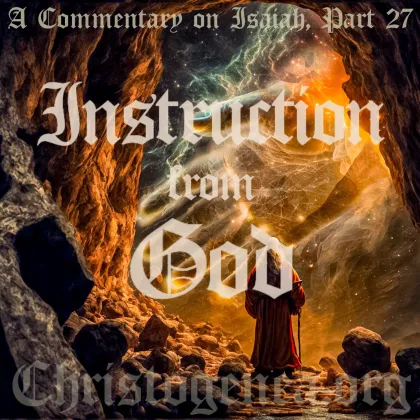
A Commentary on Isaiah, Part 27: Instruction from God
Thus far in the course of our discussion of Isaiah chapter 28, we have once again observed that as the children of Israel had been taken off into captivity for punishment for their sins, they were given hope in promises of a future reconciliation. However the terms of that reconciliation had also been expressed along with those promises. So where the prophet had asked “whom shall He teach knowledge?” and “whom shall He make to understand doctrine?”, as those questions had been answered in his prophecy it becomes manifest that doctrine and knowledge as they are taught by the Word of God are prerequisite to entering the Kingdom of Heaven. Therefore, as we discussed those answers, we noticed that Paul of Tarsus had cited this very passage in Isaiah where he wrote in 1 Corinthians chapter 14 that “21 In the law it is written, With men of other tongues and other lips will I speak unto this people; and yet for all that will they not hear me, saith the Lord.” There Paul had purposely omitted the reference to the rest of Yahweh which is found in that same statement he had cited from Isaiah 28:11-12. However writing in (what we now know as) Hebrews chapter 4, Paul spoke of the necessity of hearing the Word of Yahweh in order to enter into His rest, where he had said in part: “7 Again, he limiteth a certain day, saying in David, To day, after so long a time; as it is said, To day if ye will hear his voice, harden not your hearts. 8 For if [Joshua] had given them rest, then would he not afterward have spoken of another day. 9 There remaineth therefore a rest to the people of God. 10 For he that is entered into his rest, he also hath ceased from his own works, as God did from his.”
Here in Isaiah, hearing the voice of Yahweh is described as learning His knowledge and understanding His doctrine, so Paul of Tarsus was essentially teaching the same things which the prophet Isaiah had also declared, even if it was from a somewhat different perspective. The hardening of hearts is the rejection of the Word of God, as Paul wrote earlier in that same epistle, in chapter 3, “15 While it is said, To day if ye will hear his voice, harden not your hearts, as in the provocation.” This is explained in Proverbs chapter 28 where we read “13 He that covereth his sins shall not prosper: but whoso confesseth and forsaketh them shall have mercy. 14 Happy is the man that feareth alway: but he that hardeneth his heart shall fall into mischief.” There, hardening the heart is a rejection of the Word of God, and concealment of sin leads to evil, or, as the Hebrew word may also mean, distress, injury, misery or calamity. That is what happened to the children of Israel, they just kept sinning, and justified themselves for their sins. So the evil which resulted was the destruction of their kingdom, and their calamity was their going into captivity.
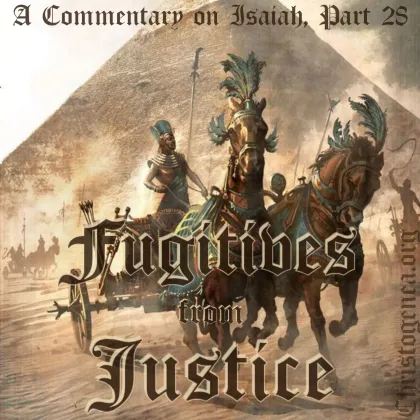
A Commentary on Isaiah, Part 28: Fugitives from Justice
Near the beginning of his long series of burdens on the nations, in Isaiah chapters 18 and 19 the prophet had announced the Burdens of Captivity, as we had described his burdens for Egypt and the land beyond the rivers of Ethiopia, or Kush. Then in Isaiah chapter 20 we read: “3 And the LORD said, Like as my servant Isaiah hath walked naked and barefoot three years for a sign and wonder upon Egypt and upon Ethiopia,” or Kush, and in Isaiah’s time kings of Kush had ruled over Egypt, something which they had done for approximately seventy-five years, or by some accounts, nearly as long as ninety years. Having discussed those burdens, we had posited that they had more than one aspect of meaning. The people of Judah at the time of Isaiah had indeed sought help from the Egyptians, in order to fend off the encroaching Assyrians, while many of them had also sought refuge in Egypt, having fled from the Assyrians. But Egypt is also used as an allegory for the Israelites, who had once been in captivity in Egypt, and in that manner also as a prophetic metaphor for Israel in captivity.
The twenty-fifth dynasty of Egypt is often called the dynasty of “Black Pharaohs”, but that concept is entirely laughable, and the archaeological evidence is contrary, as many ancient statues of Kushite rulers with fine European features have been discovered, and since the Kushites of Africa had several language dialects among them which were clearly derived from the Akkadian language of Mesopotamia, which had also once belonged to the empire of Kush in Mesopotamia. However it is evident that the Kushites in Egypt had been accompanied by Nubians, having had Nubians in their own armies. The ultimate union of Kush and Nubia is described perhaps a hundred years after Isaiah, in Jeremiah chapter 13 where the Word of Yahweh asks a rhetorical question and its says: “23 Can the Ethiopian change his skin, or the leopard his spots?” This is a Hebrew parallelism, where we see that by Jeremiah’s time the skin of Kush in Africa had become as that of a leopard, mixed with both black and white. (Isaiah chapter 43 also touches on this subject.)
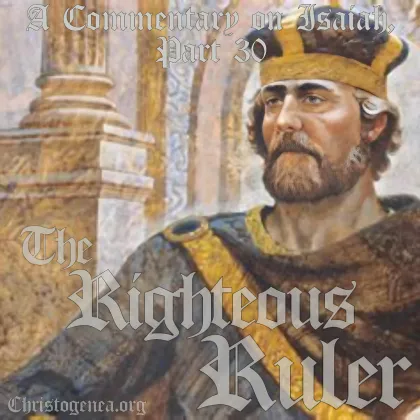
A Commentary on Isaiah, Part 30: The Righteous Ruler
Only Yahweh God may justly rule over the children of Israel, and only He can truly be a righteous ruler. When Israel had demanded an earthly king, as it is described in 1 Samuel chapter 8, they had actually rejected the rule of Yahweh their God. There we read, in part: “4 Then all the elders of Israel gathered themselves together, and came to Samuel unto Ramah, 5 And said unto him, Behold, thou art old, and thy sons walk not in thy ways: now make us a king to judge us like all the nations. 6 But the thing displeased Samuel, when they said, Give us a king to judge us. And Samuel prayed unto the LORD. 7 And the LORD said unto Samuel, Hearken unto the voice of the people in all that they say unto thee: for they have not rejected thee, but they have rejected me, that I should not reign over them.”
Of course, Samuel had not yet died, that his sinful sons might become their judges, so the elders and the people should have instead prayed to God for a righteous judge, and not for a king. They had sought an earthly solution to a problem that only God could have been expected to resolve. However a sinful people have the government that they deserve, and men shall have a tyrannical government when they deserve to be punished, as Paul of Tarsus had explained in Romans chapter 13. This is certainly a signal example of the truth of the adage, Be careful what you ask for, as the descendants of those ancient children of Israel continue to suffer on account of their demands. So today men must come to the realization, that if demanding an earthly king was a national sin, then subjecting oneself to Christ and rejecting all earthly kings, or presidents, or whatever else such a ruler may be called, must be an element of national repentance.
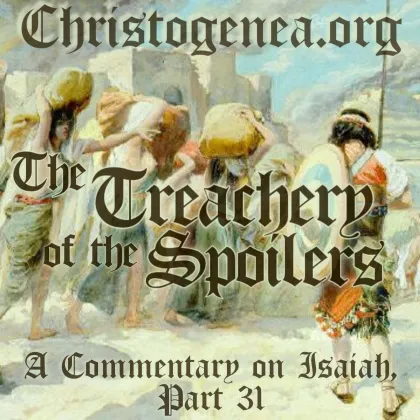
A Commentary on Isaiah, Part 31: The Treachery of the Spoilers
In Isaiah chapter 32, accompanying a promise of a Righteous Ruler, one who would protect the people and open their eyes to truth and knowledge, there were also messages foreboding punishment for the wicked in Jerusalem, and suffering for the careless women who had lived at ease, but who would be stripped bare and girt with sackcloth. Briers and thorns would overtake the land which had been emptied of its people, and the city would be left desolate “until the spirit be poured upon us from on high … and my people shall dwell in a peaceable habitation”, all of which compliments the Messianic promise of a Righteous Ruler in the opening verses of the chapter. So we would assert that this chapter follows the same pattern of prophecy which has been observed throughout Isaiah, where there are found repeated ominous warnings of destruction for Israel and Judah, woven together with Messianic promises of a future redemption, salvation and reconciliation for the people. So while the prophecy of Isaiah had contained many messages of tragedy and hope for the people of Israel of his own time, it is much more relevant to Israel over the course of the national punishment which was only just beginning in the time of Isaiah.
As we had come to the end of Isaiah chapter 32, in nearly the same breath in which it is said that “my people shall dwell in a peaceable habitation”, it is said in the very next verse that “19 When it shall hail, coming down on the forest; and the city shall be low in a low place.” This must be a reference to Jerusalem, the future of which had been the subject of this prophecy, and as we had presented it we had discussed a problem with the original reading of the verse, where one manuscript of the surviving portions of Isaiah found among the Dead Sea Scrolls has a very similarly spelled Hebrew word which means wood rather than city, and the translators of the Dead Sea Scrolls Bible had asserted that it was more likely to have been the original reading. (Making that discussion, I had hurriedly checked the passage in Origen’s Hexapla but erred in my interpretation of the Latin, so I struck it and repaired it in the notes.) There is no corroboration for the reading of wood in any of the manuscripts employed by Origen. However I may have also discussed the quite different reading found in the Septuagint version of the verse.
"If my people, which are called by my name, shall humble themselves, and pray, and seek my face, and turn from their wicked ways; then will I hear from heaven, and will forgive their sin, and will heal their land." - 2 Chronicles 7:14
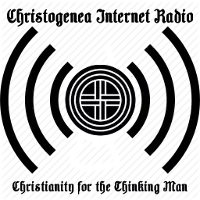
Click HERE listen to our streams.
There is now a completely new schedule with different programs for each stream every day. Click here for Radio info. Last update: September 17th, 2024
Click here for Radio Albion.
 The audio archive for the MEIN KAMPF PROJECT at Christogenea.org houses many programs related to the history of the 19th and 20th centuries which are not found here at the main Christogenea website.
The audio archive for the MEIN KAMPF PROJECT at Christogenea.org houses many programs related to the history of the 19th and 20th centuries which are not found here at the main Christogenea website.
 The Christogenea archive site contains older material produced at Christogenea and elsewhere that has been retired from our main website but which we certainly feel should remain available.
The Christogenea archive site contains older material produced at Christogenea and elsewhere that has been retired from our main website but which we certainly feel should remain available.
Christogenea is reader supported. This month's support level is reflected in the graph below. See our Contact page for a mailing address and other ways to support Christogenea.
63%


